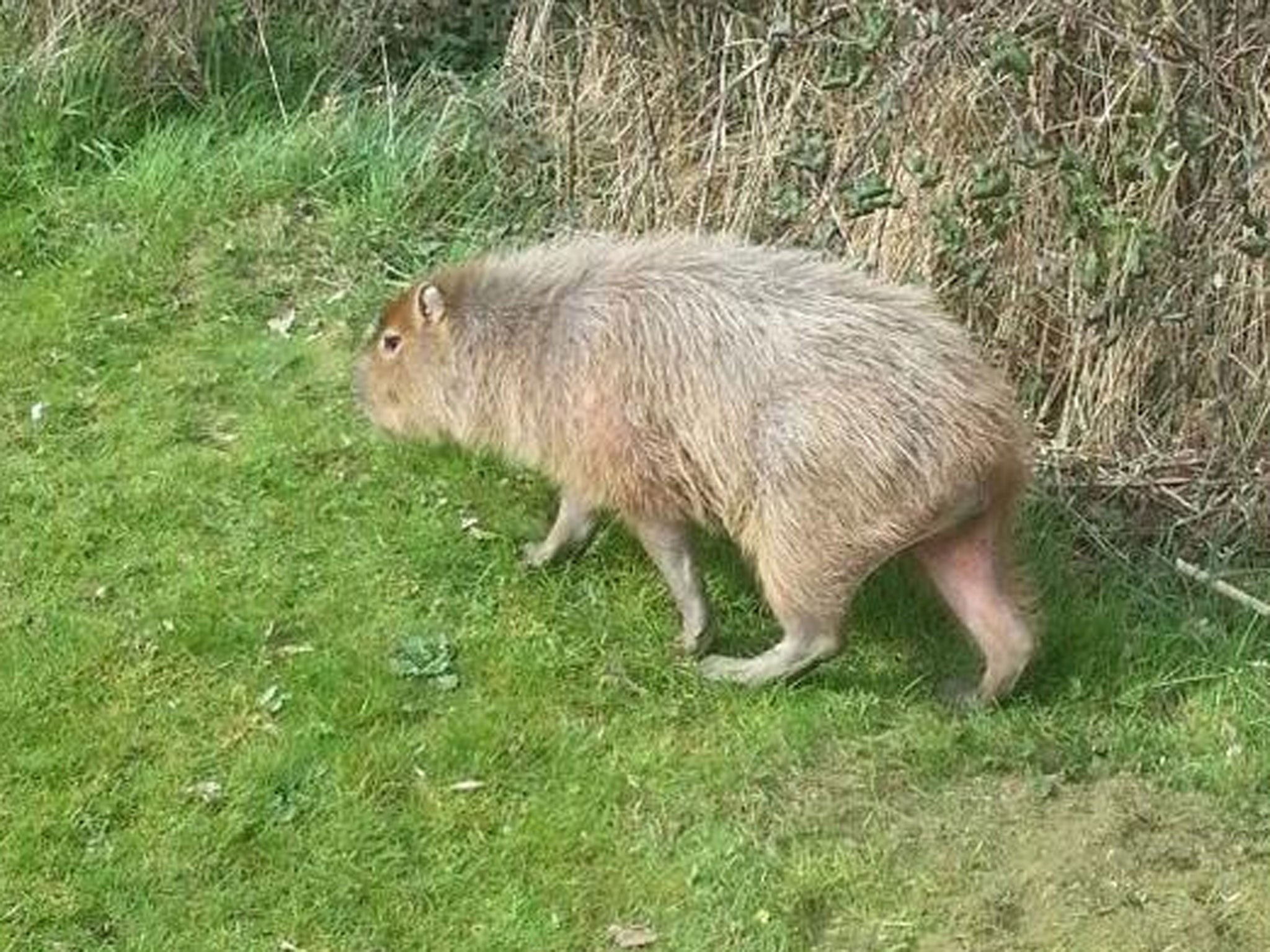Essex capybara: World’s biggest rodent stops play at North Weald golf course – a long way from native South America
Golfers initially thought the exotic animal was a wild boar

There isn’t much that links the plains of South America with a golf course in Essex, particularly when it comes to the local wildlife.
So when a member of the world’s largest rodent species, a capybara, appeared on the eighth tee at North Weald Golf Club near Harlow, players could possibly be forgiven for stopping to investigate further.
Bemused golfers described the animal as “like a cross between a beaver and a bear”, and phoned for back-up from the clubhouse. When they arrived, members of staff were able to capture the extraordinary beast – on camera.
According to the club, the players who first spotted the intruder on 16 March thought it might have been a wild boar, but “as luck would have it, another member with a bit more experience in unique animals was next up on the tee”.
Golfer Stefan Freeman identified it as an “Argentinian capybara”, adding that it was “strange to find one in the wild”, particularly in the UK.
Since the first sighting in Essex, the same animal has been spotted on the course a number of times and a local farm has confirmed that it is “missing a capybara”.
Nearby Ashlyn’s Farm Shop runs a “Farm walk” where visitors can see exotic animals, including buffalo, emus, wallabies and rhea.
Manager Rob Dixon said efforts to recapture their solitary male capybara had failed. He told the Telegraph: “We keep on trying to catch it, but as soon as we try and catch it, it’s moved on or it jumps in the river and shoots off. Next time we’ve got to get a vet out and try and tranquillise it.
“They run away from humans – they’re quite shy,” he said. “They’re not like a rat, they’re almost like a big hamster.”
Join our commenting forum
Join thought-provoking conversations, follow other Independent readers and see their replies
Comments
Bookmark popover
Removed from bookmarks